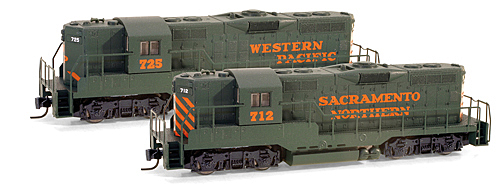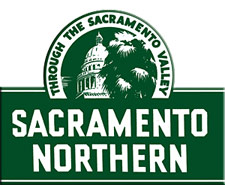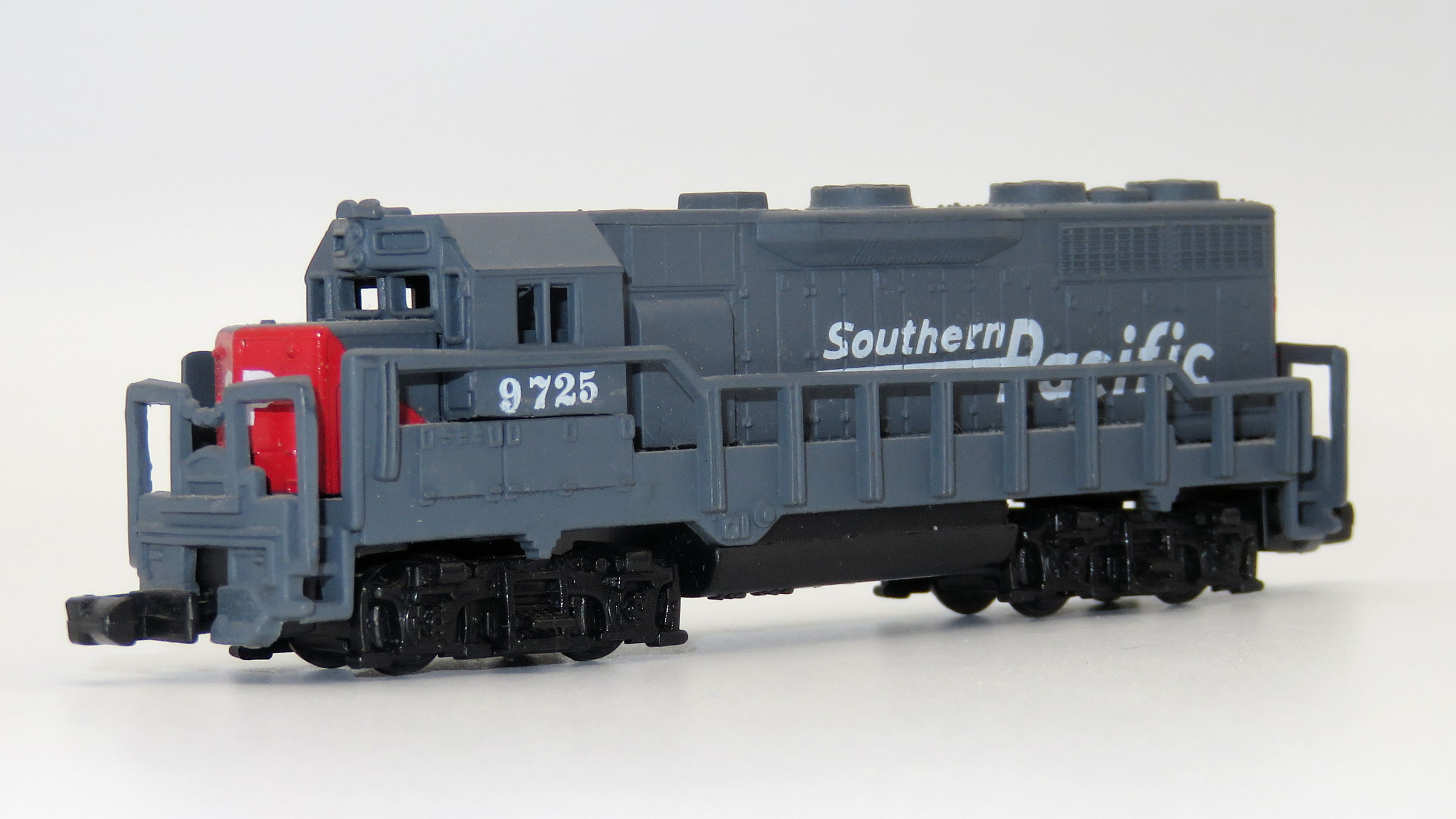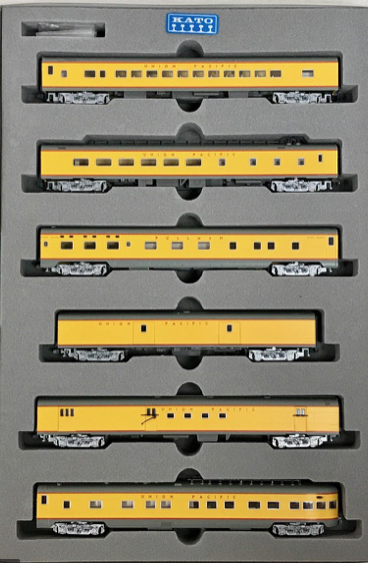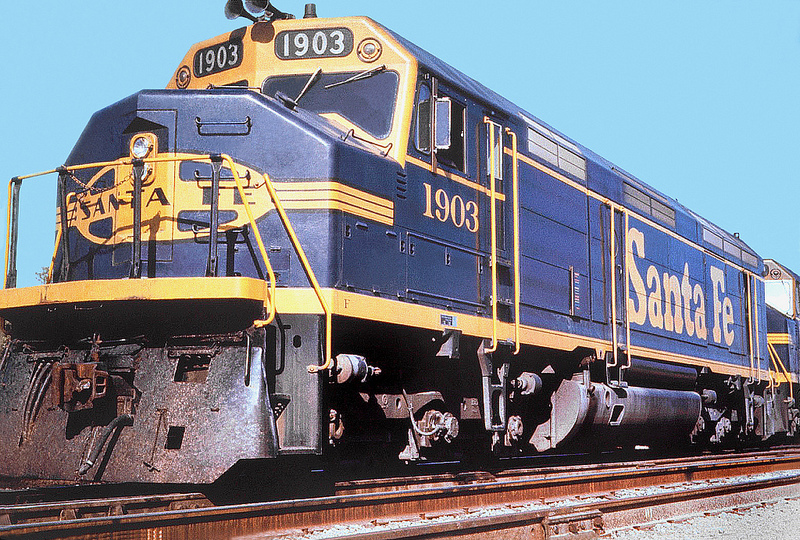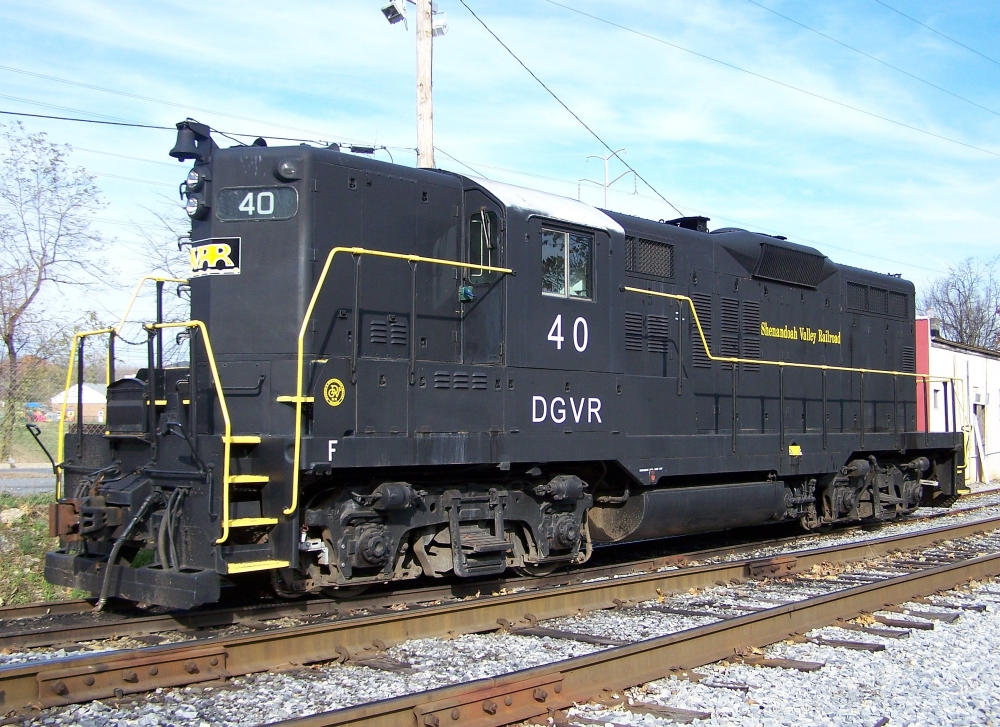Prototype History: An EMD GP9 is a four-axle diesel-electric locomotive built by General Motors' Electro-Motive Division in the United States, and General Motors Diesel in Canada between January, 1954, and August, 1963. US production ended in December, 1959, while an additional thirteen units were built in Canada, including the last two in August, 1963. Power was provided by an EMD 567C sixteen-cylinder engine which generated 1,750 horsepower (1.30 MW). This locomotive type was offered both with and without control cabs; locomotives built without control cabs were called GP9B locomotives. All GP9B locomotives were built in the United States between February, 1954, and December, 1959.
One option available for locomotives without dynamic brakes, was to remove the two 22.5 in × 102 in (571.5 mm × 2,590.8 mm) air reservoir tanks from under the frame, and replace them with four 12 in × 150.25 in (304.80 mm × 3,816.35 mm) tanks that were installed on the roof of the locomotive, above the prime mover. These “torpedo tubes” as they were nicknamed, enabled the fuel and water tanks to be increased to 1,100 US gallons (4,200 l; 920 imp gal) each, although some railroads opted for roof-mounted air tanks and 2,200 US gallons (8,300 l; 1,800 imp gal) fuel tanks on their freight ‘Geeps’.
From Wikipedia
One option available for locomotives without dynamic brakes, was to remove the two 22.5 in × 102 in (571.5 mm × 2,590.8 mm) air reservoir tanks from under the frame, and replace them with four 12 in × 150.25 in (304.80 mm × 3,816.35 mm) tanks that were installed on the roof of the locomotive, above the prime mover. These “torpedo tubes” as they were nicknamed, enabled the fuel and water tanks to be increased to 1,100 US gallons (4,200 l; 920 imp gal) each, although some railroads opted for roof-mounted air tanks and 2,200 US gallons (8,300 l; 1,800 imp gal) fuel tanks on their freight ‘Geeps’.
From Wikipedia
Road Name History: The Sacramento Northern Railway (reporting mark SN) was an 183-mile (295 km) electric interurban railway that connectected Chico in northern California with Oakland via the California capital, Sacramento. In its operation it ran directly on the streets of Oakland, Sacramento, Yuba City, Chico, and Woodland and ran passenger service until 1941 and freight service into the 1960s.
The Sacramento Northern (SN) was an electrified interurban railroad in California that extended 183 miles from Oakland north to Chico. There were two branches, one to Woodland-Colusa, and the other to Oroville. The SN had been two separate interurban companies connecting at Sacramento until 1925. The Oakland, Antioch, and Eastern Railway was a trolley-wire powered line that ran from Oakland through a tunnel in the Oakland hills to Moraga, Walnut Creek, Concord, Pittsburg, to Sacramento. It was renamed the San Francisco-Sacramento Railroad briefly. The Northern Electric Railway was a third-rail powered line that ran from Sacramento north through Marysville-Yuba City to Chico. The train crossed the Sacramento River on the Red Gate Bridge. It was renamed the Sacramento Northern Railroad in 1914. In 1928, the two lines combined to become the Sacramento Northern Railway and came under control of the Western Pacific Railroad which operated it as a separate entity. An extensive multiple-car passenger service operated from Oakland to Chico until 1941 including providing dining car service on some trains. Passenger traffic was heaviest from Sacramento to Oakland. Freight operation using electric locomotives continued into the 1960s. The SN was a typical interurban in that its trains, including freight, ran on downtown city streets in Oakland, Sacramento, Yuba City, and Woodland. This involved multiple car trains making sharp turns at street corners and obeying traffic signals. Once in open country, SN's passenger trains ran at fairly fast speeds. With its shorter route and lower fares, the SN provided strong competition to the Southern Pacific and Western Pacific railroads for passenger business and minor freight business between those two cities. North of Sacramento, rail business was less due to the small town agricultural nature of the region with is small towns and by competition from the SP Railroad.
From Wikipedia
The Sacramento Northern (SN) was an electrified interurban railroad in California that extended 183 miles from Oakland north to Chico. There were two branches, one to Woodland-Colusa, and the other to Oroville. The SN had been two separate interurban companies connecting at Sacramento until 1925. The Oakland, Antioch, and Eastern Railway was a trolley-wire powered line that ran from Oakland through a tunnel in the Oakland hills to Moraga, Walnut Creek, Concord, Pittsburg, to Sacramento. It was renamed the San Francisco-Sacramento Railroad briefly. The Northern Electric Railway was a third-rail powered line that ran from Sacramento north through Marysville-Yuba City to Chico. The train crossed the Sacramento River on the Red Gate Bridge. It was renamed the Sacramento Northern Railroad in 1914. In 1928, the two lines combined to become the Sacramento Northern Railway and came under control of the Western Pacific Railroad which operated it as a separate entity. An extensive multiple-car passenger service operated from Oakland to Chico until 1941 including providing dining car service on some trains. Passenger traffic was heaviest from Sacramento to Oakland. Freight operation using electric locomotives continued into the 1960s. The SN was a typical interurban in that its trains, including freight, ran on downtown city streets in Oakland, Sacramento, Yuba City, and Woodland. This involved multiple car trains making sharp turns at street corners and obeying traffic signals. Once in open country, SN's passenger trains ran at fairly fast speeds. With its shorter route and lower fares, the SN provided strong competition to the Southern Pacific and Western Pacific railroads for passenger business and minor freight business between those two cities. North of Sacramento, rail business was less due to the small town agricultural nature of the region with is small towns and by competition from the SP Railroad.
From Wikipedia
Brand/Importer Information:  Micro-Trains Line split off from Kadee Quality Products in 1990. Kadee Quality Products originally got involved in N-Scale by producing a scaled-down version of their successful HO Magne-Matic knuckle coupler system. This coupler was superior to the ubiquitous 'Rapido' style coupler due to two primary factors: superior realistic appearance and the ability to automatically uncouple when stopped over a magnet embedded in a section of track. The success of these couplers in N-Scale quickly translated to the production of trucks, wheels and in 1972 a release of ready-to-run box cars.
Micro-Trains Line split off from Kadee Quality Products in 1990. Kadee Quality Products originally got involved in N-Scale by producing a scaled-down version of their successful HO Magne-Matic knuckle coupler system. This coupler was superior to the ubiquitous 'Rapido' style coupler due to two primary factors: superior realistic appearance and the ability to automatically uncouple when stopped over a magnet embedded in a section of track. The success of these couplers in N-Scale quickly translated to the production of trucks, wheels and in 1972 a release of ready-to-run box cars.
Micro-Trains Line Co. split off from Kadee in 1990 to form a completely independent company. For this reason, products from this company can appear with labels from both enterprises. Due to the nature of production idiosyncrasies and various random factors, the rolling stock from Micro-Trains can have all sorts of interesting variations in both their packaging as well as the products themselves. When acquiring an MTL product it is very important to understand these important production variations that can greatly enhance (or decrease) the value of your purchase.

Micro-Trains Line Co. split off from Kadee in 1990 to form a completely independent company. For this reason, products from this company can appear with labels from both enterprises. Due to the nature of production idiosyncrasies and various random factors, the rolling stock from Micro-Trains can have all sorts of interesting variations in both their packaging as well as the products themselves. When acquiring an MTL product it is very important to understand these important production variations that can greatly enhance (or decrease) the value of your purchase.
Item created by: petecduffy on 2019-05-15 15:21:38
If you see errors or missing data in this entry, please feel free to log in and edit it. Anyone with a Gmail account can log in instantly.
If you see errors or missing data in this entry, please feel free to log in and edit it. Anyone with a Gmail account can log in instantly.


